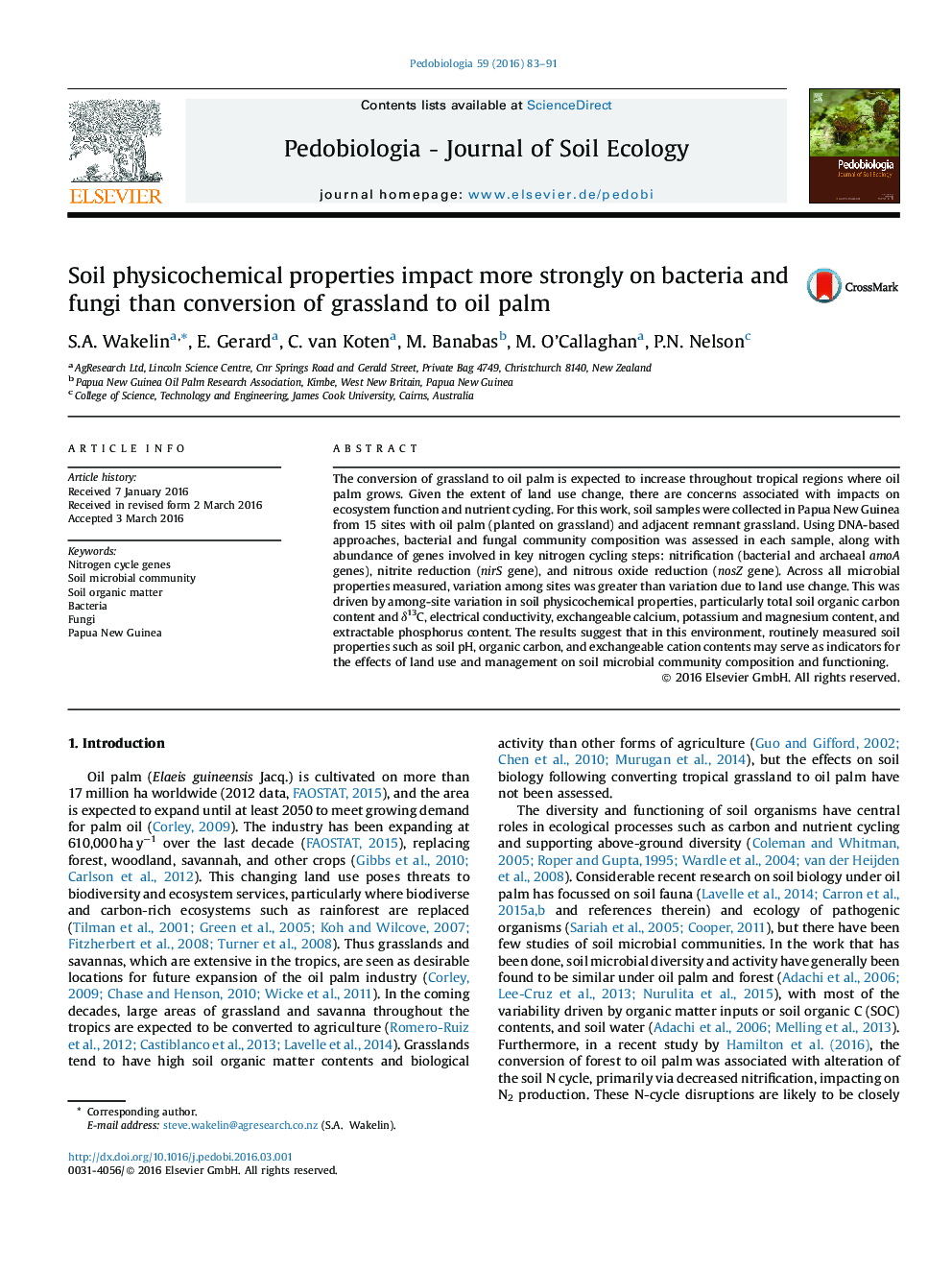| Article ID | Journal | Published Year | Pages | File Type |
|---|---|---|---|---|
| 2060996 | Pedobiologia | 2016 | 9 Pages |
•Microbiology and edaphic properties were compared among grassland and oil palm soils.•Bacterial and fungal community composition and multiple N-cycle genes were assessed.•Microbial responses were linked to variation in soil physicochemistry among sites.•pH and organic C may be indicators for effects of land use change on soil biology.
The conversion of grassland to oil palm is expected to increase throughout tropical regions where oil palm grows. Given the extent of land use change, there are concerns associated with impacts on ecosystem function and nutrient cycling. For this work, soil samples were collected in Papua New Guinea from 15 sites with oil palm (planted on grassland) and adjacent remnant grassland. Using DNA-based approaches, bacterial and fungal community composition was assessed in each sample, along with abundance of genes involved in key nitrogen cycling steps: nitrification (bacterial and archaeal amoA genes), nitrite reduction (nirS gene), and nitrous oxide reduction (nosZ gene). Across all microbial properties measured, variation among sites was greater than variation due to land use change. This was driven by among-site variation in soil physicochemical properties, particularly total soil organic carbon content and δ13C, electrical conductivity, exchangeable calcium, potassium and magnesium content, and extractable phosphorus content. The results suggest that in this environment, routinely measured soil properties such as soil pH, organic carbon, and exchangeable cation contents may serve as indicators for the effects of land use and management on soil microbial community composition and functioning.
